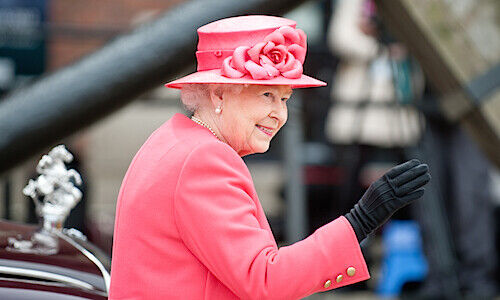Yesterday, Queen Elizabeth II passed away at the age of 96. finews.asia reviews the iconic roots of the longest-serving British monarch in Hong Kong’s financial history.
Yesterday afternoon, Queen Elizabeth II died peacefully in her Scottish estate Balmoral Castle at the age of 96, according to a statement by her son and the new king Charles, marking an end to her 70-year reign as the longest-serving British monarch.
Upon taking the throne in 1952 at the young age of 26, the Queen was would oversee the British empire in the late stages of its colonial era with a number of territories changing the status of their sovereignty in the coming decades. Hong Kong was a notable example as it was one of Britain’s last significant colonial territories which would go on to become a leading financial center in the world.
finews.asia reviws the iconic roots of the Queen in Hong Kong’s financial history.
Currency Icon
A simple stroll down Hong Kong’s central business district reveals the deep heritage of the British royal family in Hong Kong, most notably Queen Victoria. Many of the city’s landmarks are named after her, including Queen’s Road which houses the local headquarters of various global banks including British giants HSBC and Standard Chartered.
But while her great-grandmother dominates the names of many key locations, the face of Elizabeth II is more prevalent. Not unlike many of the British empire’s current and former territories, the Queen’s face can be readily found across the city’s banknotes and coins. Regional neighbor and rival hub Singapore had also used fiat money featuring the Queen called the Malaya and British Borneo dollar until 1967.
Secret Sino-British Money Plans
Interestingly, the Queen’s portrait in Hong Kong's money was a widely discussed matter under the Sino-British Joint Declaration of 1984, with a key tenet stating that local currency that makes «references inappropriate» to the city’s status as a special administrative region of China had to be «progressively replaced and withdrawn from circulation».
Joseph Yam, the first chief of the Hong Kong Monetary Authority (HKMA), said that the Queen's image in Hong Kong banknotes and coins was a priority agenda item in the Sino-British Confidential Financial Dialogue for seven years. He recalled that the coin’s design was a «top secret» so much so that «no single artist could be entrusted with the information».
«One of the first things discussed was the politically delicate transition for banknotes and coins in Hong Kong,» according to an «SCMP» interview with Yam, who was deputy to Hong Kong's former secretary for monetary affairs David Nendick at the time. «We had to get Britain to remove any reference to pre-1997 British sovereignty, [while] trying to convince the Chinese to accept a depoliticized design for our coins to be circulated through and beyond 1997.»
Bauhinia Flower
Ultimately, authorities agreed on a design for coins featuring the Bauhinia blakeana flower, named after botany enthusiast and ex-Hong Kong governor Sir Henry Blake.
«The flower of Hong Kong was the most appropriate because it does not hold any political connotation,» Yam said, adding that the compromise was «not easy».
The first coins and banknotes with Elizabeth II’s portrait were issued in 1955 while the last such banknote was a 1-cent note issued in 1992, which ceased to be legal tender after demonetization in 1995. And since 1993, Hong Kong also stopped issuing coins with the Queen’s head, marking an end to 130 years of British royal symbols and visages in local currency designs. While the HKMA has since withdrawn 900 million coins featuring pre-1993 designs, they still represent around 5 percent of the total in active circulation.
Presence Felt
The Queen’s intersection with the financial sector is not limited to images on money. She is likely to have a role in shaping the Sino-British Joint Declaration which covers not only Hong Kong's currency design but also underlined that its financial market would be separate from mainland China. In 1986, she famously made her second visit to the city and spent time with ex-HSBC chair Michael Sandberg, who passed away in 2017, at the bank’s local headquarters and the Happy Valley Racecourse to view horse racing – known to be one of Elizabeth II's deep passions.
While it is difficult to ascertain the exact influence of Elizabeth II on Hong Kong’s financial history – the Queen has remained secretive throughout her reign and has never given a public interview – her legacy and presence have been felt and will be for many years to come.
«Britain is both proud and privileged to have been involved with this success story. Proud of the British values and institutions that have been the framework for Hong Kong's success,» said the Queen during a 1997 speech marking the handover to China. «Britain is part of Hong Kong's history and Hong Kong is part of Britain's history. We are also part of each other's future. We are confident that the ties between us will not only endure but will continue to develop.»



























